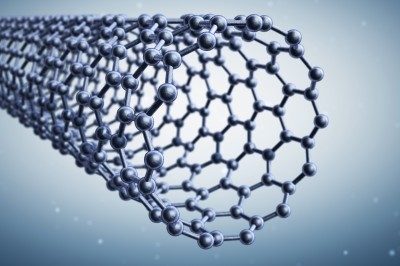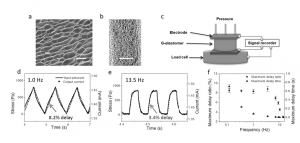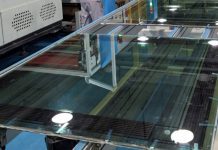
Monash University researchers have discovered a new sponge-like material that they believe could have diverse and valuable real-life applications, including in healthcare and the electronics industry.

Graphene-based cellular elastomer, or G-elastomer, is one of the lightest materials ever made.
Structurally, it is similar to natural cork, but at a nanoscale, and unlike rubber-based materials – where the delay in responding to pressure generally increases with the frequency of the pressure – the piezoresistive response of G-elastomer remains almost instant, regardless of the frequency.
The fast response feature of this material is unattainable in existing, polymer-based, flexible electronics, because the viscoelastic behaviour of polymers can affect their electrical signal.
G-elastomer is both very flexible and highly conductive, so the electrical signal is not affected, regardless of how you compress it. The lowest pressure graphene elastomer can detect is almost one order of magnitude lower than any previously reported flexible, piezoresistive pressure sensor.

Dr Ling Qiu from the Monash Centre for Atomically Thin Materials (MCATM) said that this unique, dynamic response has never been found in existing soft materials.
“This graphene elastomer is a flexible, ultra-light material which can detect pressures and vibrations across a broad bandwidth of frequencies. It far exceeds the response range of our skin, and it also has a very fast response time, much faster than conventional polymer elastomer,” he said.
“Although we often take it for granted, the pressure sensors in our skin allow us to do things like hold a cup without dropping it, crushing it, or spilling the contents. The sensitivity and response time of G-elastomer could allow a prosthetic hand or a robot to be even more dexterous than a human, while the flexibility could allow us to create next generation flexible electronic devices.”
Professor Dan Li, a director of MCATM, described the research as an “excellent breakthrough” despite it being in the early stages of discovering graphene’s potential.
“What we do know is that graphene could have a huge impact on Australia’s economy, both from a resources and innovation perspective, and we’re aiming to be at the forefront of that research and development,” Mr Li concluded.
Dr Qiu’s research has been published in the latest edition of the journal Advanced Materials and is protected by a suite of patents.

















